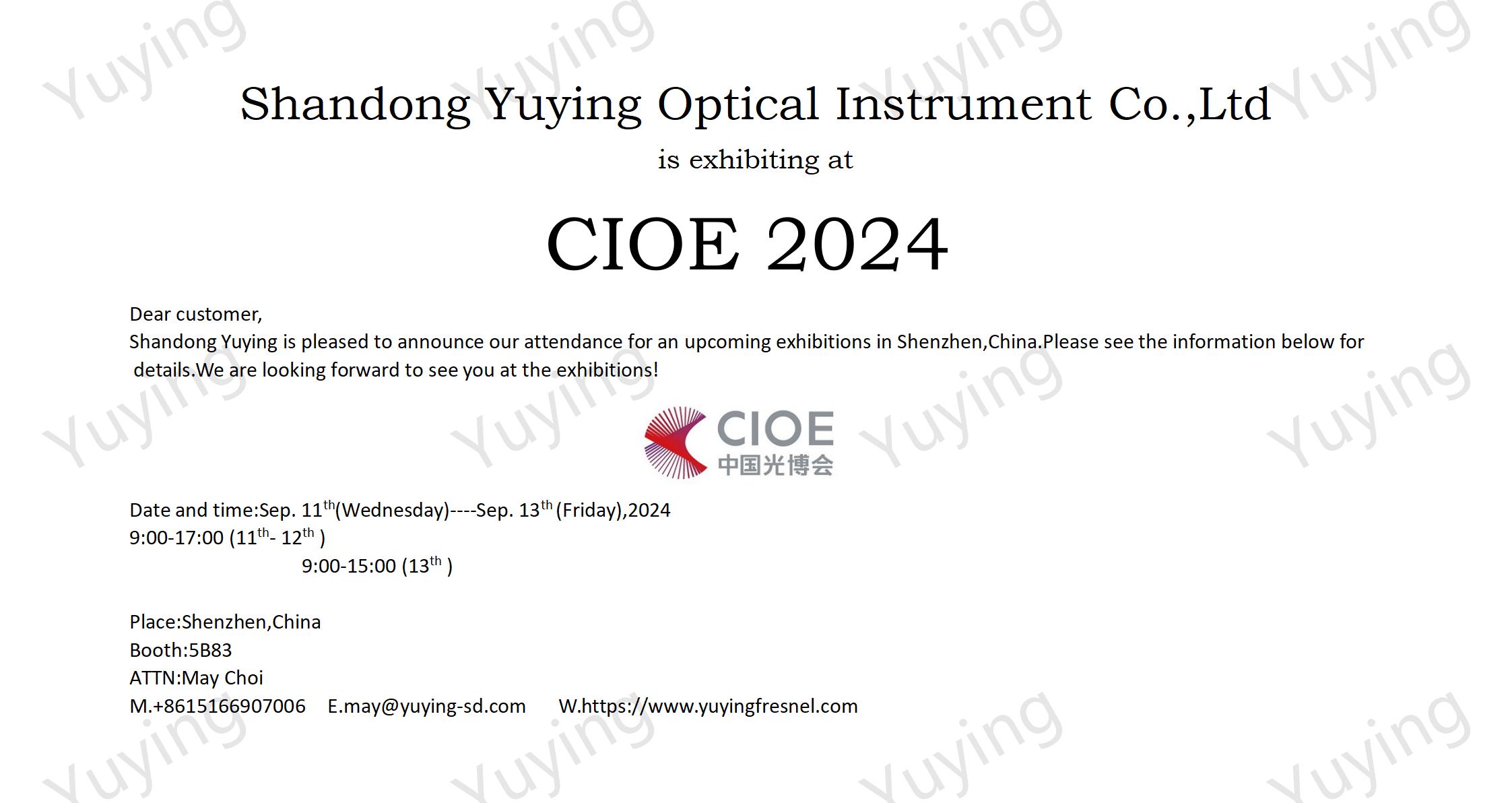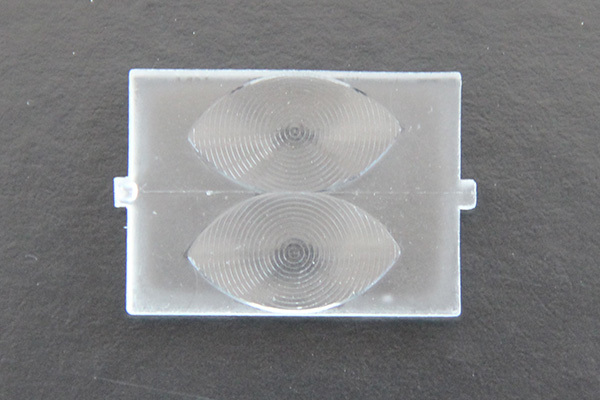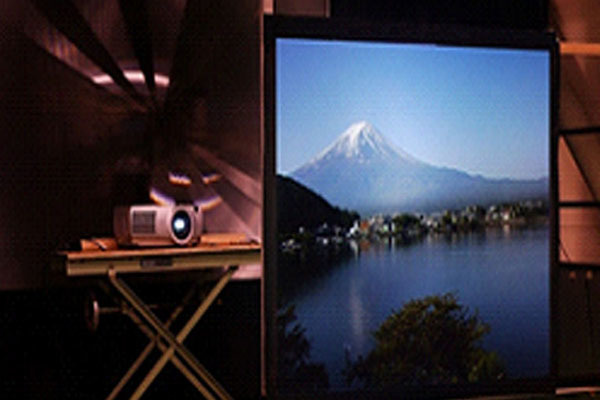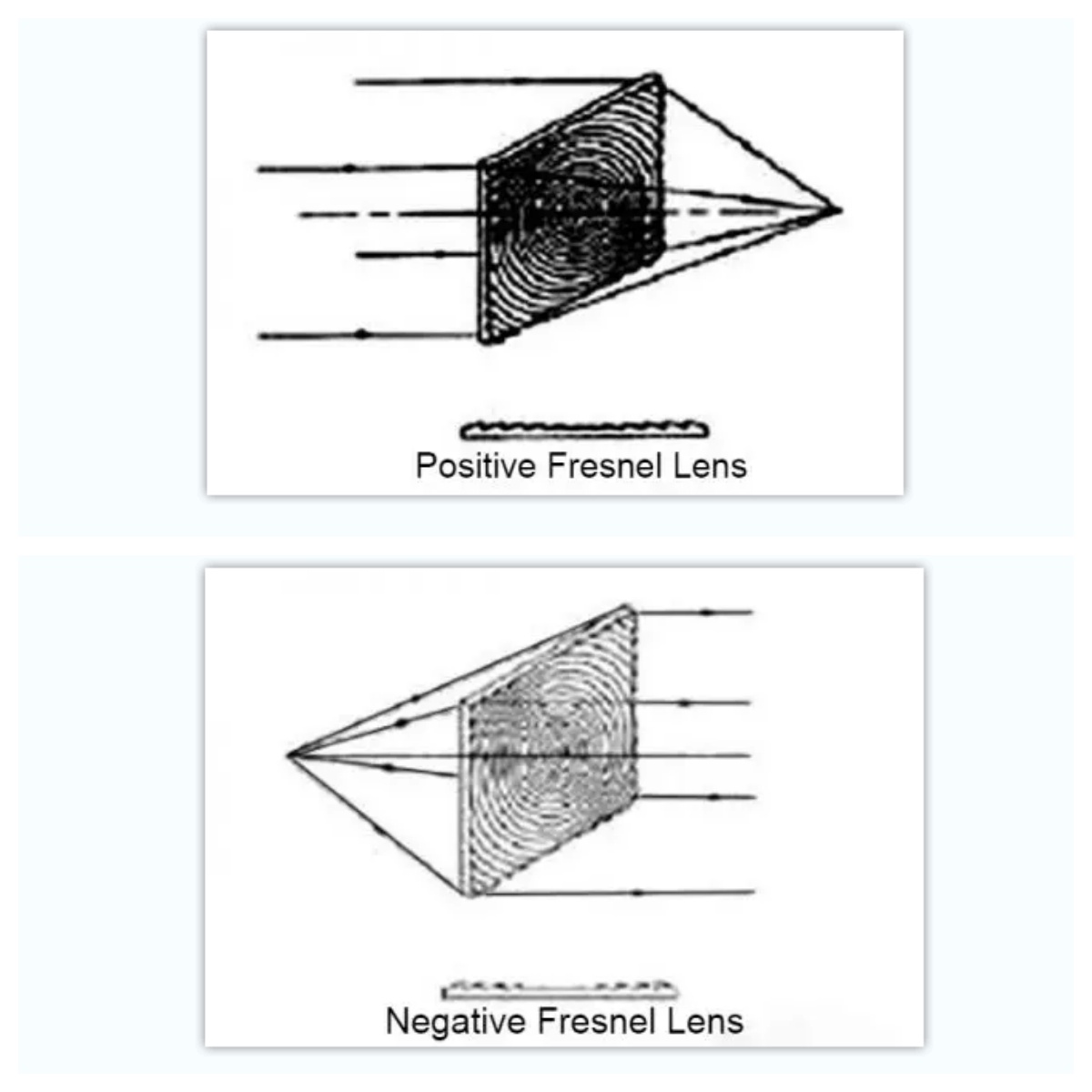Traditional lenses are thicker and smaller in size; Fresnel lenses are thin, light and large in size.
The Fresnel lens principle was invented by French physicist Augustin Fresnel. It converts spherical and aspheric lenses into light and thin planar lenses to achieve the same optical effect, and then uses ultra-precision processing to achieve the same optical effect. In this way, a large number of optical grade annulus are processed on the plane surface, and each annulus acts as an independent lens. Fresnel lenses are a good way to achieve larger, planar, and thinner lenses.
The manufacturing of First Fresnel lenses, especially large-size lenses, involves optical design simulation, ultra-precision manufacturing technology, polymer materials and precision molding processes. Fresnel lenses can be widely used in lighting, navigation, scientific research, etc.
The Fresnel lens is in the form of a flat plate and has the function of reflecting and converging rays. Using this principle and splicing technology, paraboloids, ellipsoids, and high-order curved optical lenses of any caliber can be converted into planar shapes, thereby realizing splicing of Fresnel lenses of any size to explore the use of solar energy in space and giant reflective surfaces (such as Guizhou Tianyan 500 meter diameter radio telescope) and other applications.
The endless splicing technology of Fresnel lenses can be used from several meters to hundreds of meters to any large size. The parabolic reflective surface of the Guizhou sky eye with a diameter of 500 meters can use this splicing technology to form a planar The Fresnel lens simulates a paraboloid, reducing the difficulty of processing and making it easier to install and adjust.








